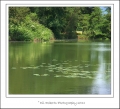Both the OM-D and the Panasonic 14-140 f4-5.8 have image stabilisation but I believe the one implemented in the OM-D is better so I switched the one in the lens off. All of these images were taken with that configuration.
Both ILIS and IBIS have their advantages and disadvantages, the IBIS can be used with every lens you mount on the camera, even the very old legacy lenses. As these functions are developed, ILIS gets better and better too, but it can't be relaced in the lenses you have already bought. That means that once you have bought a lens then you're stuck with the ILIS that came with the lens. People may argue that that also applies to the system in the camera. I have to agree with that but I tend to buy lenses that will stay with me for some time. I.e. I don't buy a lens and expect it to be replced very soon, and cameras tend to come and go at regular intervals. A camera that costs you €1000 today will most likely be heavily discounted in a years time and can be picked up for a third of the original price; or less. Lenses tend to be expensive toys and there is little point in duplicating the focal range already covered. So people tend to be very careful when buying a lens or a range of lenses, especially zoom lenses. They normally do their research before buying.
The only time you will normally find the focal length duplicated is when prime lenses are bought that a zoom lens already covers. The reason being of course: the speed of the lens. These prime lenses usually have a maximum aperture of f1.4, f1.8 or f2.8. They are normally used for indoor shots such as in bars, during performances or indoor sport venues.
A photographer can be split into two categories; 1. A prime lens user and 2. A zoom lens user. This doesn't mean that they don't use the other type of lens, but prefer using one sort over the other. I like prime lenses but tend to use zooms because I'm always finding myself in a situation where I've got the wrong prime lens mounted. Some would call me lazy but there are situations where you just can't zoom with your feet and zoom lenses are excellent for just this reason.
Both ILIS and IBIS have their advantages and disadvantages, the IBIS can be used with every lens you mount on the camera, even the very old legacy lenses. As these functions are developed, ILIS gets better and better too, but it can't be relaced in the lenses you have already bought. That means that once you have bought a lens then you're stuck with the ILIS that came with the lens. People may argue that that also applies to the system in the camera. I have to agree with that but I tend to buy lenses that will stay with me for some time. I.e. I don't buy a lens and expect it to be replced very soon, and cameras tend to come and go at regular intervals. A camera that costs you €1000 today will most likely be heavily discounted in a years time and can be picked up for a third of the original price; or less. Lenses tend to be expensive toys and there is little point in duplicating the focal range already covered. So people tend to be very careful when buying a lens or a range of lenses, especially zoom lenses. They normally do their research before buying.
The only time you will normally find the focal length duplicated is when prime lenses are bought that a zoom lens already covers. The reason being of course: the speed of the lens. These prime lenses usually have a maximum aperture of f1.4, f1.8 or f2.8. They are normally used for indoor shots such as in bars, during performances or indoor sport venues.
A photographer can be split into two categories; 1. A prime lens user and 2. A zoom lens user. This doesn't mean that they don't use the other type of lens, but prefer using one sort over the other. I like prime lenses but tend to use zooms because I'm always finding myself in a situation where I've got the wrong prime lens mounted. Some would call me lazy but there are situations where you just can't zoom with your feet and zoom lenses are excellent for just this reason.














